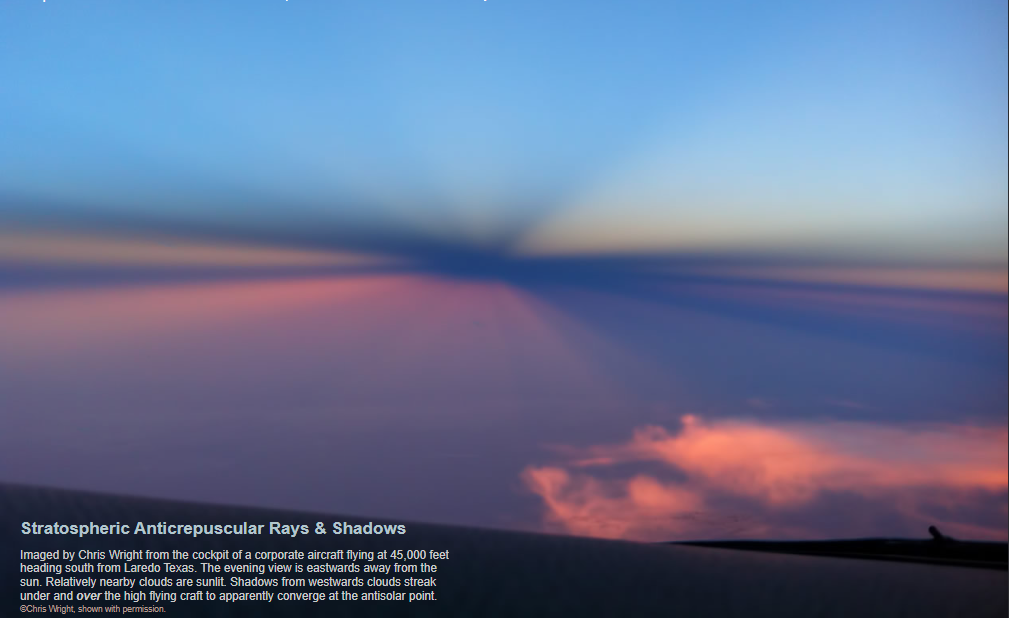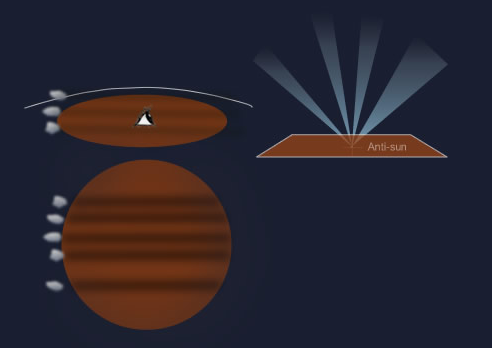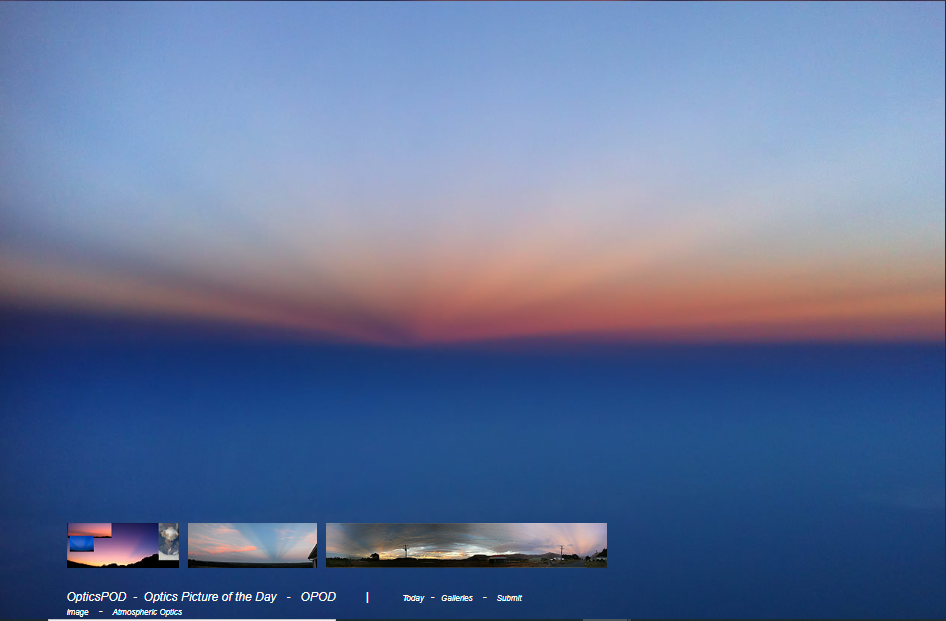OPOD - Stratospheric Anticrepuscular Rays & Shadows
OPOD - Stratospheric Anticrepuscular Rays & Shadows
Have you ever witnessed a mesmerizing display of rays and shadows crossing the sky? These phenomena, known as stratospheric anticrepuscular rays and shadows, are truly unusual and captivating. Unlike their more common counterparts, these rays and shadows can be observed in the normally pristine air of the stratosphere.
To understand the formation of these ethereal phenomena, we need to delve into the science behind them. Rays and shadows become visible when there are small suspended particles or droplets in the atmosphere that scatter light. In the case of stratospheric rays, they are often seen following volcanic eruptions that release fine ash and acid aerosols high into the atmosphere. These eruptions can occur miles above the Earth's surface, with volcanic mountains like Mexico's Popocatépetl being potential sources.
When observing stratospheric anticrepuscular rays and shadows, you may notice that the shadows appear to converge towards the antisolar point, which is directly opposite the position of the sun. This convergence is an optical illusion caused by perspective. Similar to how roads or railway tracks appear to converge in the distance, the long shadows seem to meet at a single point due to our viewing angle.
As the shadows approach the antisolar point, they gradually darken. This darkening occurs because our line of sight shifts from looking across the shadowed air corridors to looking along them. This change in perspective allows us to peer deeper into the shadowed regions, resulting in a darker appearance.
The images captured by Chris Wright from the cockpit of a corporate aircraft flying at an altitude of 45,000 feet offer a stunning view of these stratospheric anticrepuscular rays and shadows. In the photographs, we can observe nearby clouds bathed in sunlight while the shadows from westward clouds streak over and under the high-flying aircraft, seemingly converging towards the antisolar point. The contrasting interplay between light and shadow creates a breathtaking spectacle.
It is worth noting that the visibility of these phenomena can be influenced by various factors, such as the concentration of suspended particles or droplets in the stratosphere, the angle of the sun, and the observer's position. Therefore, witnessing stratospheric anticrepuscular rays and shadows is a relatively rare occurrence that requires specific atmospheric conditions to align perfectly.
In conclusion, stratospheric anticrepuscular rays and shadows offer a captivating display of nature's artistic prowess. These rare phenomena, observed in the normally pristine air of the stratosphere, result from the scattering of light by suspended particles or droplets following volcanic eruptions. The convergence of the shadows towards the antisolar point creates an optical illusion that adds to the allure of this celestial spectacle. So, keep your eyes peeled and embrace the wonder of the skies, as you never know when you might witness these enchanting phenomena firsthand.

Stratospheric Anticrepuscular Rays & Shadows
Imaged by Chris Wright from the cockpit of a corporate aircraft flying at 45,000 feet heading south from Laredo Texas. The evening view is eastwards away from the sun. Relatively nearby clouds are sunlit. Shadows from westwards clouds streak under and over the high flying craft to apparently converge at the antisolar point.
©Chris Wright, shown with permission.

These anticrepuscular (antisolar is a better name) rays and shadows are unusual. They cross the sky in the normally clean air of the stratosphere.
Rays and shadows need small suspended particles or droplets to scatter light and make them visible. Stratospheric rays are seen after volcanic eruptions have lofted fine ash and acid aerosol forming sulphur dioxide 10-15 miles or more upwards. Chris Wright suggests Mexico�s stratovolcano Popocat�petl might be responsible as there have been several recent small eruptions.
The long shadows are parallel and only appear by perspective to converge towards the point directly opposite the sun. Roads and railway tracks similarly seem to converge in the distance.
The shadows darken as they near the antisolar point because the eye looks increasingly along the long corridors of shadowed air rather than across them.


Note: this article has been automatically converted from the old site and may not appear as intended. You can find the original article here.
Reference Atmospheric Optics
If you use any of the definitions, information, or data presented on Atmospheric Optics, please copy the link or reference below to properly credit us as the reference source. Thank you!
-
<a href="https://atoptics.co.uk/blog/opod-stratospheric-anticrepuscular-rays-shadows/">OPOD - Stratospheric Anticrepuscular Rays & Shadows</a>
-
"OPOD - Stratospheric Anticrepuscular Rays & Shadows". Atmospheric Optics. Accessed on November 26, 2024. https://atoptics.co.uk/blog/opod-stratospheric-anticrepuscular-rays-shadows/.
-
"OPOD - Stratospheric Anticrepuscular Rays & Shadows". Atmospheric Optics, https://atoptics.co.uk/blog/opod-stratospheric-anticrepuscular-rays-shadows/. Accessed 26 November, 2024
-
OPOD - Stratospheric Anticrepuscular Rays & Shadows. Atmospheric Optics. Retrieved from https://atoptics.co.uk/blog/opod-stratospheric-anticrepuscular-rays-shadows/.